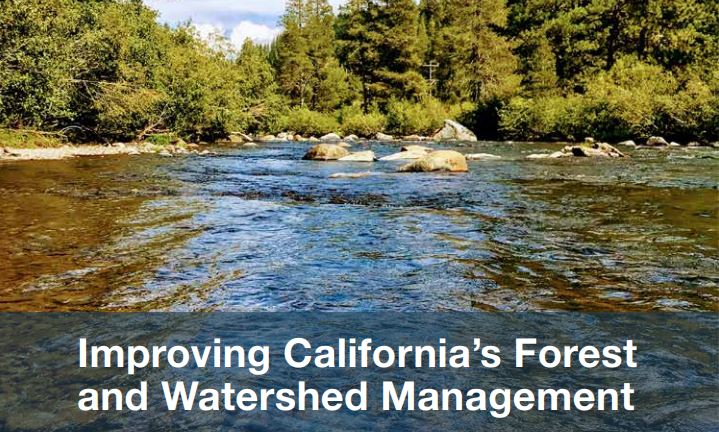 Roughly one-third of California is forested, including the majority of the watersheds that serve as the key originating water source for millions of people across the state. These forests also provide critical air, wildlife, climate, and recreational benefits. However, a combination of factors have resulted in poor conditions across these forests and watersheds, including excessive vegetation density and an overabundance of small trees and brush. Such conditions have contributed to more prevalent and severe wildfires and unprecedented tree mortality in recent years, and experts are concerned these trends will continue if steps are not taken to significantly improve the health of the state’s forests.
Roughly one-third of California is forested, including the majority of the watersheds that serve as the key originating water source for millions of people across the state. These forests also provide critical air, wildlife, climate, and recreational benefits. However, a combination of factors have resulted in poor conditions across these forests and watersheds, including excessive vegetation density and an overabundance of small trees and brush. Such conditions have contributed to more prevalent and severe wildfires and unprecedented tree mortality in recent years, and experts are concerned these trends will continue if steps are not taken to significantly improve the health of the state’s forests.
This report was mentioned at the April 18th ACCG General Meeting, specifically calling out kudos for UMWRA… see below.
You can download the entire report here: LAO Rept forest-watershed-management-040418
CITATION Page 27:
“Downstream Beneficiaries Not Contributing Much to Forest Health Activities”
“As discussed, the majority of the state’s developed water supply originates in its forested source watersheds, and that supply is threatened by overly dense forest conditions and wildfire risk. Yet despite the inherent interest in maintaining forest health this creates for downstream water users, few of those users are investing in maintaining the health of their source watersheds. While comprehensive statewide data are not available, our review found only a few examples of water or hydropower agencies that are opting to spend their local funds on projects to maintain or improve forest health. Instead, as discussed earlier, the bulk of funding for forest health programs comes either from the state or federal agencies. The limited examples we found of local investments in forest health generally were from agencies receiving water and hydropower directly from nearby forests. These include the Upper Mokelumne River Watershed Authority (a joint powers authority made up of six water agencies [Note: UMRWA also includes Amador, Calaveras & Alpine Counties]) and the Placer County Water Agency. These groups are partnering with other agencies (such as USFS) to improve the health of their watersheds, including undertaking forest thinning and restoration projects.”
 Roughly one-third of California is forested, including the majority of the watersheds that serve as the key originating water source for millions of people across the state. These forests also provide critical air, wildlife, climate, and recreational benefits. However, a combination of factors have resulted in poor conditions across these forests and watersheds, including excessive vegetation density and an overabundance of small trees and brush. Such conditions have contributed to more prevalent and severe wildfires and unprecedented tree mortality in recent years, and experts are concerned these trends will continue if steps are not taken to significantly improve the health of the state’s forests.
Roughly one-third of California is forested, including the majority of the watersheds that serve as the key originating water source for millions of people across the state. These forests also provide critical air, wildlife, climate, and recreational benefits. However, a combination of factors have resulted in poor conditions across these forests and watersheds, including excessive vegetation density and an overabundance of small trees and brush. Such conditions have contributed to more prevalent and severe wildfires and unprecedented tree mortality in recent years, and experts are concerned these trends will continue if steps are not taken to significantly improve the health of the state’s forests.